Coffee emotion of agronomic consultant of Nestl é
Coffee is an emotion. This emotion comes not only from the mellow taste, but also from the precipitation of thoughts in the quiet time brought by coffee, which brings me closer to myself and better understand me. When coffee is getting closer and closer to my own career, I can feel the power of coffee all the time, which is not only the driving force to pursue the ideal of work, but also the healing power to overcome the difficulties of life. I am also deeply aware of the increasingly deep and lingering affection between my colleagues and farmers.
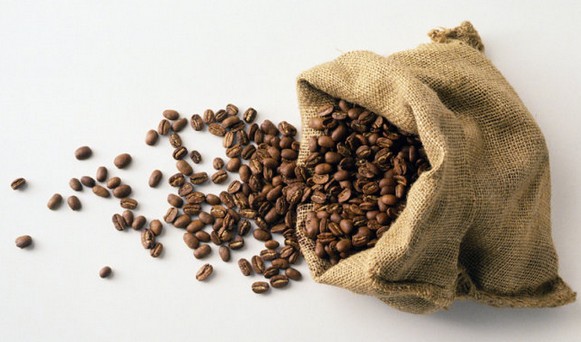
During my six years in China, I have realized my dream of the countryside. It is really important for me to have my family life and the warmth of my indispensable home in China. To me, Lijiang is just a noisy "big supermarket", Kunming is an "intermediate station" for connecting flights, and Pu'er is a "downtown" where cheese can be bought. At first I settled on a farm, but I didn't move to an apartment in town with my wife and daughter until two years ago. Because the dogs and chickens on the farm are so noisy, at first there were two chickens, but now they have become 20. They are always quarrelling so that my daughter can't sleep. My daughter is four years old, and she naturally thinks that her father produces all the coffee in the world. She always points to the coffee on display in the supermarket and calls it Coffee Daddy! Coffee! Dad!), I don't know if our family's coffee gene can continue in her.
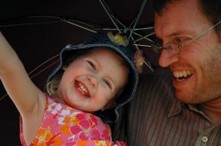
Six years ago, when my Chinese partner Hou Jiazhi and I just started working here and drove a small red car with the Nestle logo all over the mountains every day, the local farmers were just scared and watching. No one dared to come up and talk to him, a Cantonese-speaking translator, let alone talk to a blond foreigner like me around the translator. Some people even said that this Chinese was too rich to hire a foreign driver. Gradually, when the farmers got used to seeing the little red car, the bolder one went up and asked Lao Hou tentatively, "the birds and nests painted in your car are so small, aren't you collecting quail eggs?" This makes Lao Hou and I really laugh and cry. But it is this small red car that seems to collect quail eggs that infiltrates coffee culture into Pu'er bit by bit. People are no stranger to me now. When I drive on the road, I often open the window in order to reach out my arm and say hello to the farmers I know well along the way.
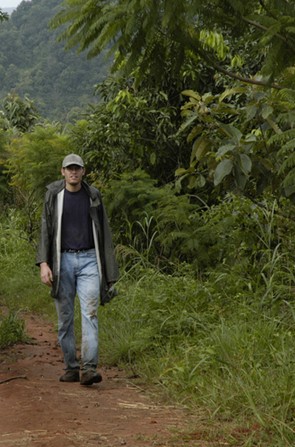
When we visit the fields, we often ask for hardship. We have to go to some remote mountain villages that are inaccessible. This is the only way to go to Ka Nong to solve their problems. On a trip, we met a new farmer, Zhang Kui, who used to make a living by growing tea. In 2010, he bought 5000 coffee seedlings and planned to set aside more than 10 mu of land to grow coffee. "my land is two kilometers away from here, so it's very difficult to walk." Zhang Kui said to Lao Hou, "but (coffee) Miao seems to be sick. Can he (referring to me) go and have a look?" We then followed Zhang Kui, who was on a motorcycle, to his newly reclaimed land. I praised Zhang for "doing a good job" because he left trees in the field. In general, tea farmers tend to make "Chinese mistakes" when they change to grow coffee: follow the method of growing tea, burn the land, cut down miscellaneous trees, and clean up the ground. Because although it is also a terraced layout in mountainous areas, unlike tea trees, coffee, a tropical crop, needs shade from trees and vegetation in the growth process. In order to save the land that had been burned, I instructed Zhang to replant trees in the field-one large tree every ten meters and scattered. He looked carefully at the slightly withered coffee tree leaves pointed out by Zhang Kui and came to the conclusion that the land lacked boron and advised him to apply 35 jin per mu.
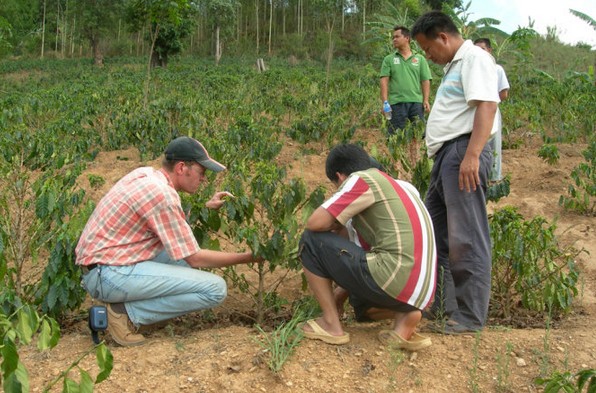
As an agronomic consultant of Nestl é, our daily work is inseparable from contact with farmers. First of all, we will go to Ka Nong's field to check whether the land is suitable for coffee growth. Only when the land is suitable can Ka Nong buy seeds. After that, Ka Nong will come to our seedling base for free to learn how to raise seedlings. When the seedlings grow to a certain time, we will help Ka Nong transplant the seedlings to the coffee plantations in the mountains. During the growing period of coffee, agronomic experts will continue to follow up and teach farmers how to cultivate, fertilize, disinfect and defrost. After coffee has entered the mature stage, experts will also give technical support to farmers in the links of picking, shelling and drying. After providing a series of free services, we will not force farmers to sell coffee to Nestl é. We not only teach farmers to observe the price of coffee in the New York futures market, but also teach farmers how to judge the quality of coffee by cups. In this two-way choice, we are less like a buying and selling relationship with farmers, more like a teacher-student relationship.
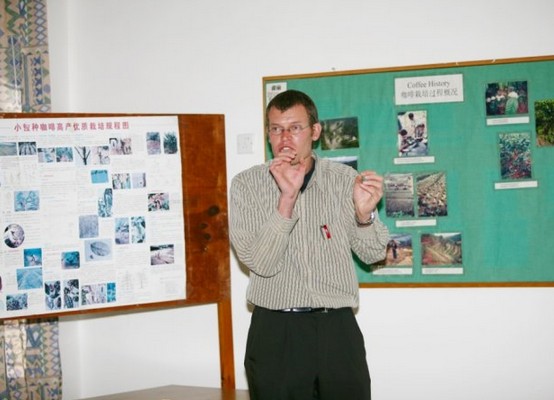
During the buying season, I can recognize the origin and owner of the coffee as soon as I look at the driver. Because they are as kind as my brothers. I often bake some high-quality coffee by myself and give it to the farmer as a gift. On the one hand, I can tell the farmer what the high-quality coffee tastes like. On the other hand, the farmer can also give the coffee as a gift to his family and friends. Let more people share the deep feelings we have formed because of coffee.
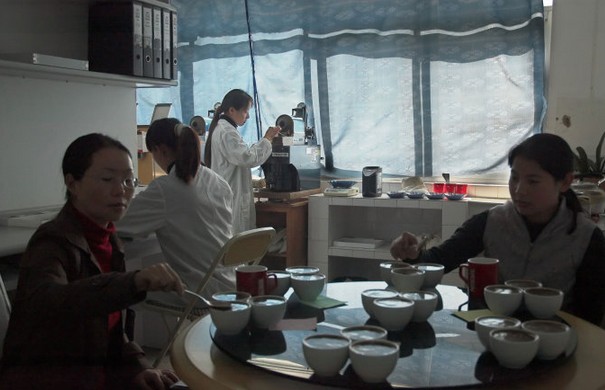
In my small office, the small seed coffee of Pu'er went to the world. There are beautiful pictures of the coffee garden taken by my wife on the wall of the office. Only those who have experienced the coffee garden and coffee growing process can understand the feelings of people like me who love coffee deeply, and can find such a perfect shooting angle. Only those who are familiar with coffee can capture these perfect moments of coffee cultivation. In the photo, every blooming flower, every full fruit, every smiling face greeting the harvest, records not only our painstaking efforts, but also love and respect for coffee and coffee farmers.
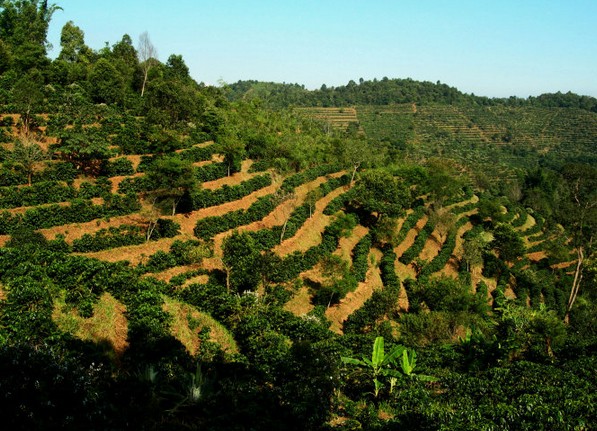
Important Notice :
前街咖啡 FrontStreet Coffee has moved to new addredd:
FrontStreet Coffee Address: 315,Donghua East Road,GuangZhou
Tel:020 38364473
- Prev
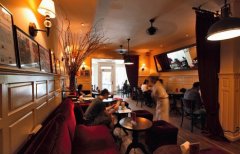
Experience the fun of the NOCO in the cafe
In the 1920s and 1930s, many luxury cafes that copied Parisian style sprang up like bamboo shoots after a spring rain, covering the streets of the French concession overnight. At that time, drinking coffee was the joy of life for the upper class and the intellectual class. The public coffee cafe, located on Duolun Road in Hongkou, bears witness to the elegant demeanor of the left League scribes. How many lively and interesting plots, from the public space in this city
- Next

The reason why Swiss gold is the first choice for office coffee maker
There are several preferred types of personal office coffee pots: French presser, hario cfo or tiamo single filter cup coffee maker, Swiss gold swissgold kf-300 drip filter coffee maker and so on. In a careful and comprehensive comparison, the personal office coffee maker is preferred to the Swiss gold swissgold kf-300 drip filter coffee maker, because it is clearer than the coffee filtered by the French press and is more clear than hario cfo or tiamo alone.
Related
- Beginners will see the "Coffee pull flower" guide!
- What is the difference between ice blog purified milk and ordinary milk coffee?
- Why is the Philippines the largest producer of crops in Liberia?
- For coffee extraction, should the fine powder be retained?
- How does extracted espresso fill pressed powder? How much strength does it take to press the powder?
- How to make jasmine cold extract coffee? Is the jasmine + latte good?
- Will this little toy really make the coffee taste better? How does Lily Drip affect coffee extraction?
- Will the action of slapping the filter cup also affect coffee extraction?
- What's the difference between powder-to-water ratio and powder-to-liquid ratio?
- What is the Ethiopian local species? What does it have to do with Heirloom native species?

